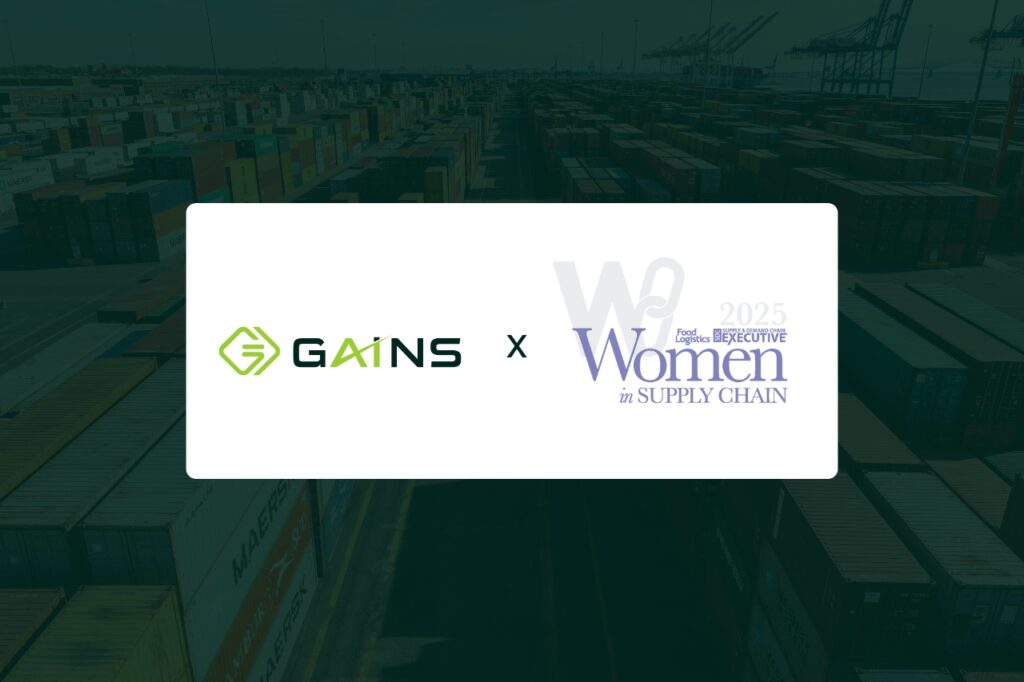
Why GAINS made its newest supply chain network design solution cloud native.
As businesses today navigate an increasingly interconnected and complex landscape, the importance of a well-structured and efficient supply chain cannot be overstated. We have seen all too often the consequences of getting it wrong or relying on outdated supply chain management methods. Here, the discipline of Supply Chain Design emerges, forming a backbone for operational excellence, sustainability, and resilience in companies worldwide.
Supply Chain Design is an essential component of operational strategies, enhancing the ability of businesses to deliver products and services efficiently and effectively. From the strategic configuration of logistics, manufacturing processes, and distribution centers, it offers a robust foundation for improved service levels, cost efficiency, and overall performance.
However, the traditional methods of achieving this are no longer sufficient. Enter cloud-native technology, bringing with it the potential to revolutionize supply chain design.
GAINS Supply Chain Design: Powering Up with Cloud-Native Technology
GAINS, the leading provider of cloud-native supply chain design solutions, is at the heart of the shift towards cloud-native supply chain network design. Following the acquisition of 3 Tenets Optimization, GAINS has advanced its offering, delivering a unique blend of powerful analytics and strategic insights to optimize supply chain design decisions.
GAINS’ solutions embody the paradigm shift toward cloud-native technology, incorporating flexibility, adaptability, and advanced analytics capabilities.
Cloud-native technology, by definition, refers to software designed specifically for cloud computing environments. This modern approach offers an array of benefits, including real-time data access and analytics, unparalleled scalability and adaptability, and seamless integration and automation capabilities.
Cloud-Native Technology: Transforming Supply Chain Management
GAINS cloud-native supply chain network design technology is paving the way for improved supply chain operations by revolutionizing how businesses design and manage their supply chains. Companies that leverage cloud-native platforms like GAINS can dynamically adjust their supply chain design in response to real-time changes in supply and demand, thereby unlocking continuous and incremental value. It is at the forefront of transforming how businesses operate, plan, and optimize their supply chains by integrating advanced technologies and innovative practices in an unprecedented manner.
Why Cloud-Native Design Is a Must
Shifting to cloud-native design is no longer an option; it is imperative. This is driven by several key advantages it offers over traditional supply chain design:
- Real-time data access and analytics – allow for data-driven decision-making and innovation. Leveraging the power of cloud computing, the GAINS platform provides real-time insights to facilitate quick and informed decisions. The solution enables businesses to respond to real-time changes in supply and demand, thereby improving efficiency and profitability.
- Scalability and adaptability – cater to fluctuating demand and supply conditions. Cloud-native supply chain solutions can quickly scale up or down in response to changes in demand. For instance, if an unexpected surge in demand occurs, businesses can immediately upscale their supply chain operations to meet this demand without needing significant time or resources to upgrade their infrastructure.
- Operational Resilience – Cloud-native solutions offer better resilience to disruptions due to their distributed nature. Traditional supply chain models often have single points of failure that can disrupt the entire operation. However, cloud-native systems are designed to mitigate these risks and quickly recover from disruptions, ensuring continuity in the face of change.
- Collaboration and information sharing – across all supply chain stakeholders, enable sharing of best practices. A cloud-native supply chain systems provide an integrated view of the entire supply chain, promoting collaboration between different teams, departments, or even organizations. This increased visibility allows for faster, more coordinated responses to change.
- Automation and AI integration – streamline operations and free resources for more strategic tasks. Cloud-native supply chain design often integrates automation and AI technologies. These capabilities allow for automatic adjustments in response to changes in supply and demand, business rules, or strategic objectives. AI can also predict changes and trends, providing businesses with the information they need to adapt their supply chain operations proactively.
Five Key Benefits of Cloud-Native Supply Chain Design
With GAINS leading the way, cloud-native supply chain design offers several distinct benefits:
- Cost-effectiveness: The real-time insights provided by GAINS’ cloud-native supply chain design allow businesses to pinpoint cost-saving opportunities throughout their supply chains. For example, companies can identify and operationalize optimized cost/service trade-offs and continually configure their supply chains to boost profitability.
- Resilience and Adaptability: A company’s ability to adapt to change and maintain operations is critical in today’s uncertain environment. GAINS’ cloud-native solution helps businesses prepare for many scenarios, making them more resilient and adaptable. It allows companies to alter their supply chain design based on real-time changes, ensuring they’re constantly optimized for current market conditions.
- Continuous Improvement: With GAINS’ supply chain design solution, improvements aren’t one-off. The system is designed to facilitate continuous improvement, with businesses able to make iterative enhancements to realize value both in the short and long term. This continual evolution ensures that a company’s supply chain remains optimized as the business grows and market conditions change.
- Speed and Scalability: Traditional supply chain management tools often face limitations in dealing with large volumes of data, hindering their performance. With GAINS’ cloud-native solution, these barriers are non-existent. The cloud’s inherent scalability allows companies to handle vast quantities of data and perform complex computations quickly and efficiently. This scalability leads to faster insights and decisions, enabling businesses to keep up with the rapid pace of today’s markets.
- Sustainability: With detailed visibility into the supply chain and sophisticated analytics capabilities, businesses can use GAINS’ cloud-native supply chain design to pursue sustainability goals. Companies can use the technology to assess the environmental impact of different supply chain configurations and adjust accordingly, aligning their operations with environmental and social responsibility commitments.
The GAINS Advantage: Driving Innovation in Supply Chain Design
GAINS’ cloud-native supply chain design is not just a technological advancement—it’s a complete paradigm shift. It allows businesses to move away from static, inflexible supply and embrace dynamic, data-driven operations that can keep pace with today’s fast-changing business environment. It’s about creating a supply chain that is not just a cost center but a strategic asset for competitive advantage.
The pivotal role of cloud-native technology in revolutionizing supply chain management cannot be understated. It fosters real-time data exchange, optimization, scalability, and continuous improvement.
As businesses strive to navigate the ever-evolving global landscape, embracing solutions like GAINS supply chain design is a step towards building a resilient, efficient, and sustainable supply chain. The future of supply chain design is here, and it is cloud-native.
Learn More About how GAINS is using advanced technology to drive innovation in our customer’s supply chains:
Critical Elements of Effective Supply Chain Design
How Much Would You Gain from Taking an AI Approach to Inventory?
Speed, Flexibility, and Why “Traditional” Planning Methods Just Aren’t Enough



